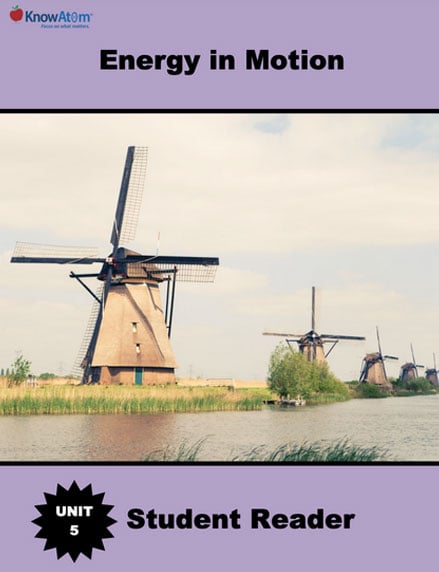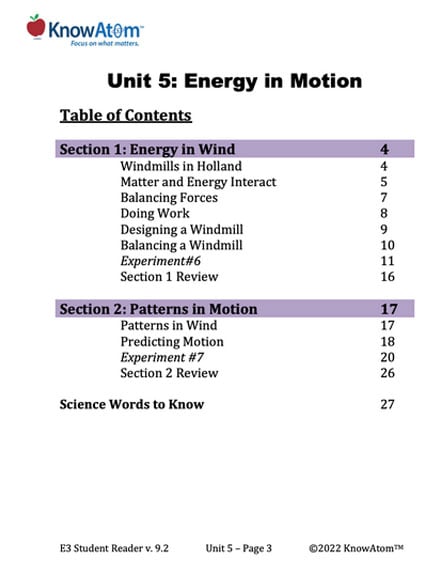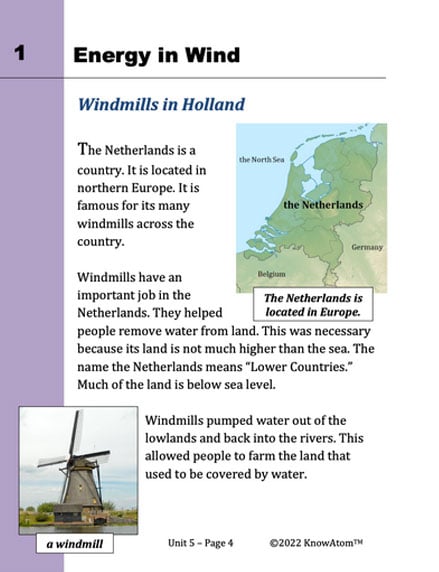Patterns in Wind
The state of California is home to the largest wind farm in the United States. A wind farm is made up of a kind of windmill called a turbine. Wind turbines capture the wind’s energy to produce electricity.
The California wind farm is located in the mountains. Mountains are very windy. Coastlines along the ocean are also very windy.
Remember that the stronger the wind is, the more kinetic energy it has. People build windmills in places that they know are windy. This is because windmills in windy places are able to do more work.
Predicting Motion
There are patterns in how a windmill moves. There are patterns in motion all around us. These patterns can be used to make predictions about future movement. For example, when you move back and forth on a swing, your motion follows a predictable pattern.
First, you cannot move on the swing unless an unbalanced force causes you to move. This can come from someone else pushing you, or pushing off the ground with your feet.
Once you are in motion, the swing moves back and forth in a predictable way. It will take the swing the same amount of time to complete each swing. You will keep moving like this until another force slows you down. For example, air resistance will slow you down. Air resistance is similar to friction. It turns motion energy into heat.





.png?width=318&height=399&name=Screenshot%20(20).png)


